Across Asia humans in rural areas are in constant contact with the Tokay Gecko, which takes its name from the noise it makes in many Asian languages and in English as well. Reaching up to 30-40cm in length and capable of inflicting a nasty bite, it preys on insects and small vertebrates, with snacks of fruit in between.
Its range extends from northeastern India, across Nepal and Bhutan and then down through southeast Asian countries like Malaysia, the Philippines, Indonesia and on to New Guinea. Sometimes kept as a pet elsewhere in the world, it has been introduced into the US in Hawaii and Florida, where it has become a destructive invasive species.
DECIMATING POPULATIONS
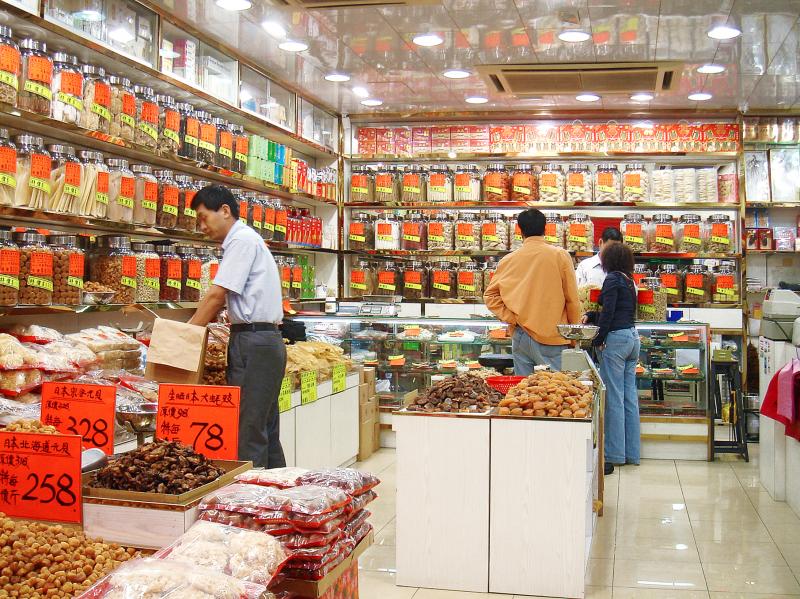
Photo courtesy of Wikimedia Commons
In Chinese medicine, Tokay Geckos are in high demand. Hence, across Asia, this useful and important lizard is being ruthlessly exterminated.
Though a few go to the pet trade, each year probably a million or more of these large reptiles are captured, killed and prepared for use in Chinese “medicine” to “treat” cancer, asthma, diabetes and (inevitably) erectile dysfunction (is there some Chinese “medicine” that doesn’t treat that?), among a host of diseases. In some Asian countries wine or whiskey made with Tokay Gecko is consumed as an (what else?) aphrodisiac.
Moreover, from time to time new uses are sadly found. For example, from 2009 to 2011 the gecko enjoyed a brief vogue as a “treatment” for HIV, which naturally spiked demand.
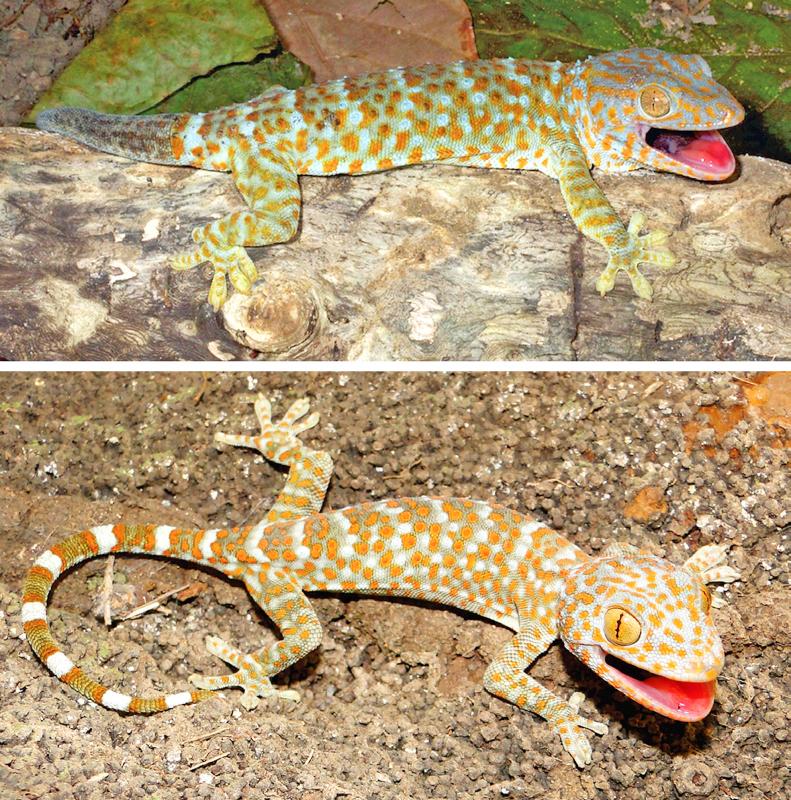
Photo courtesy of Wikimedia Commons
It goes without saying that these “treatments” have no basis in scientific fact. This completely unnecessary and pseudoscientific demand for the Tokay Gecko has decimated the species, reducing it by 50 percent across much of its range, according to some estimates.
Most of the demand goes to China (in 2011 an epic shipment of 1.2 million dried geckos was busted on its way to Hong Kong from Java). But with Chinese medicine in wide use in Taiwan, dead geckos find their way here by the tonne. Between 2004 and 2013, Taiwan imported over 15 million geckos, with just over 70 percent from Thailand and the remainder largely from Indonesia.
ILLEGAL GECKO TRADE
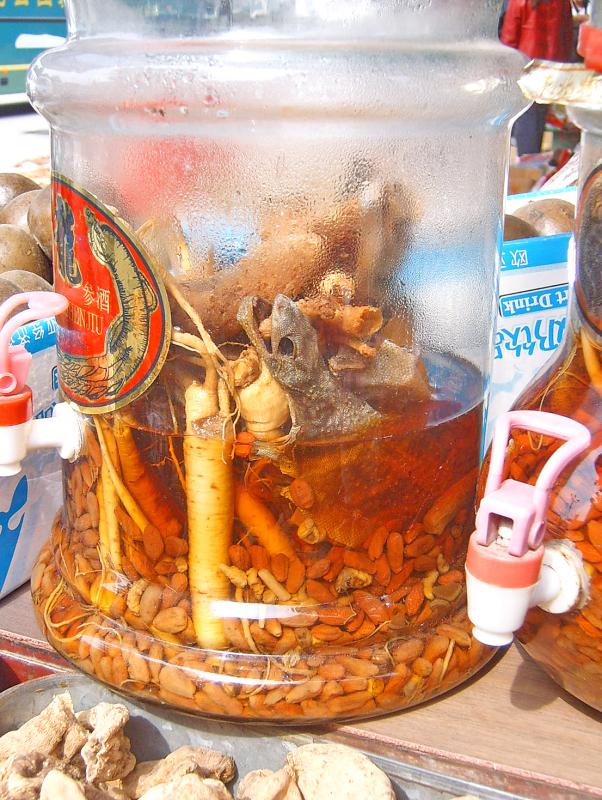
Photo courtesy of Wikimedia Commons
This massive demand has stimulated an equally massive illegal trade. In India, for example, the trade in Tokay Geckos has piggy-backed on networks established to move smuggled elephant, tiger, and rhinoceros parts. Across northwestern and western India, poachers catch the geckos, which mature and alive can be worth US$600 to US$2,500 US each, and then ship them to Myanmar, whose Tokay Gecko populations have been depleted, through Bangladesh. From there they go on to Thailand.
The geckos are caught by injecting gasoline into cracks in the rocks or trees where they are likely to be found. Sometimes poachers set fires to chase them out, with all the attendant dangers of forest fire. It goes without saying that India made it illegal to trade in or keep Tokay Geckos in 1972.
There is a legal trade in farmed Tokay Geckos, ostensibly for pets (it is easy to find them on Web sites where pets are advertised and sold) as well as medicine. In Thailand farmed geckos fetch over US$300 each when they reach 15-16 inches in length. Although proponents suggest that this reduces poaching, reports from wildlife organizations show that the legal trade simply acts as a channel for smuggling illegal wild geckos.
In Indonesia, for example, which operates a quota system for Tokay Gecko exports, it appears that far more animals are exported than are farmed, according to Traffic, an NGO working to ensure that trade in wild plants and animals is not a threat to the conservation of nature. Moreover, dead geckos are illegal to export, yet by some estimates Indonesia was exporting over 1 million dried Tokay Geckos annually.
Along the way occurs the usual madness when crime gangs are making money doing something illegal: official corruption, extortion, blackmail and murder. Poor workers, hoping for quick money, switch into the illegal trade, often earning them only prison sentences.
Because it is an illegal product manufactured by criminals, fraud is widespread — proponents of Chinese “medicine” who scoff at Big Pharma’s practices seldom concede that traditional medicine is even worse. Gecko merchants have been caught disfiguring monitor lizards in order to pass them off as gigantic geckos. Because they are sold by weight, live geckos are often injected with mercury to make them heavier. This kills them in a few days. The mercury remains, to be ingested by the patient.
This trade also threatens other Asian lizards, particularly Agamid Lizards. Common across Asia, Agamid Lizards are often killed and marketed as “geckos.” Researchers have spotted them in markets as far away as Afghanistan, killed and prepared like geckos. In one 1999 study in China 16 different lizards were found in “medicines” marketed as made from Tokay Geckos.
As a recent piece in Foreign Policy trenchantly put it, “in China traditional medicine is Big Pharma.” In China “traditional medicine” is part of establishment medicine, with hospitals in every major city and a special government department to oversee it.
“Imagine that every major European city had a university that taught that the Earth is flat and merely 6,000 years old and a hospital that practiced bloodletting and aura cleansing,” observed the Foreign Policy piece.
Thus, demand for Tokay Geckos in China is institutionalized and government supported, making it nearly impossible to stop, and driving Beijing to fight conservation efforts. Beijing also encourages “research” into this pseudoscience, distorting real scientific work and diverting precious resources to pointless studies.
DISRUPTING ECOSYSTEMS
Like any relatively large vertebrate, Tokay Geckos play a vital role in local ecosystems. They eat creatures that humans regard as pests, meaning that a large decline in their population increases human mortality from diseases like dengue and malaria. Because they are large creatures, they provide food for carnivores, especially snakes.
In addition to disrupting ecosystems by removing the animals, humans also introduce them, creating destructive invasive species. In Taiwan Tokay Geckos were twice found in the Japanese period, and the Republic of China (ROC) government later placed them on the protected species list. In 2008 a large individual was found near Taichung harbor, suggesting that it was an escapee from the pet trade. No breeding population has been found on Taiwan. However, since some local Buddhists practice the destructive Buddhist habit of releasing animals into the wild to gain merit, it appears that it is only a matter of luck that Tokay Geckos are not yet denizens of Taiwan’s remaining wild areas.
Fortunately for the Tokay Gecko and the ecologies it both lives in and threatens, last year the Convention on International Trade in Endangered Specie (CITES) listed it in Appendix II as a threatened species. Both China and Indonesia objected (of course). This may enable better regulation of the trade and reduce the threat of poaching. Yet, the money is so great — scammers in Thailand last year found a mark willing to discuss paying over a million baht (US$33,000) for one large lizard — that the pressure to poach them will remain.
This suggests that real salvation for the lizards will not be found in regulating the trade, since regulation has to date led only to expanded illegal trade and increased threat to Asia’s eroding lizard populations. The real answer is for these societies to embrace science-based medicine and end their demand for pseudoscientific “medicines” made from dead animal parts.
Long-time resident Michael Turton provides incisive commentary informed by three decades of living in and writing about Taiwan.
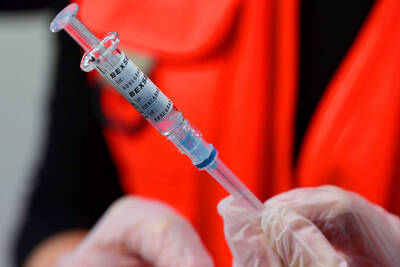
A vaccine to fight dementia? It turns out there may already be one — shots that prevent painful shingles also appear to protect aging brains. A new study found shingles vaccination cut older adults’ risk of developing dementia over the next seven years by 20 percent. The research, published Wednesday in the journal Nature, is part of growing understanding about how many factors influence brain health as we age — and what we can do about it. “It’s a very robust finding,” said lead researcher Pascal Geldsetzer of Stanford University. And “women seem to benefit more,” important as they’re at higher risk of
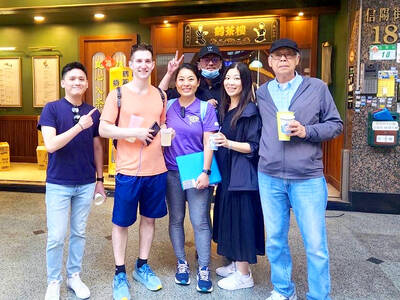
Eric Finkelstein is a world record junkie. The American’s Guinness World Records include the largest flag mosaic made from table tennis balls, the longest table tennis serve and eating at the most Michelin-starred restaurants in 24 hours in New York. Many would probably share the opinion of Finkelstein’s sister when talking about his records: “You’re a lunatic.” But that’s not stopping him from his next big feat, and this time he is teaming up with his wife, Taiwanese native Jackie Cheng (鄭佳祺): visit and purchase a

April 7 to April 13 After spending over two years with the Republic of China (ROC) Army, A-Mei (阿美) boarded a ship in April 1947 bound for Taiwan. But instead of walking on board with his comrades, his roughly 5-tonne body was lifted using a cargo net. He wasn’t the only elephant; A-Lan (阿蘭) and A-Pei (阿沛) were also on board. The trio had been through hell since they’d been captured by the Japanese Army in Myanmar to transport supplies during World War II. The pachyderms were seized by the ROC New 1st Army’s 30th Division in January 1945, serving
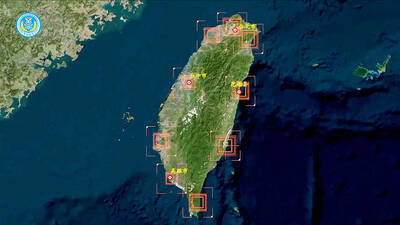
The People’s Republic of China (PRC) last week offered us a glimpse of the violence it plans against Taiwan, with two days of blockade drills conducted around the nation and live-fire exercises not far away in the East China Sea. The PRC said it had practiced hitting “simulated targets of key ports and energy facilities.” Taiwan confirmed on Thursday that PRC Coast Guard ships were directed by the its Eastern Theater Command, meaning that they are assumed to be military assets in a confrontation. Because of this, the number of assets available to the PRC navy is far, far bigger